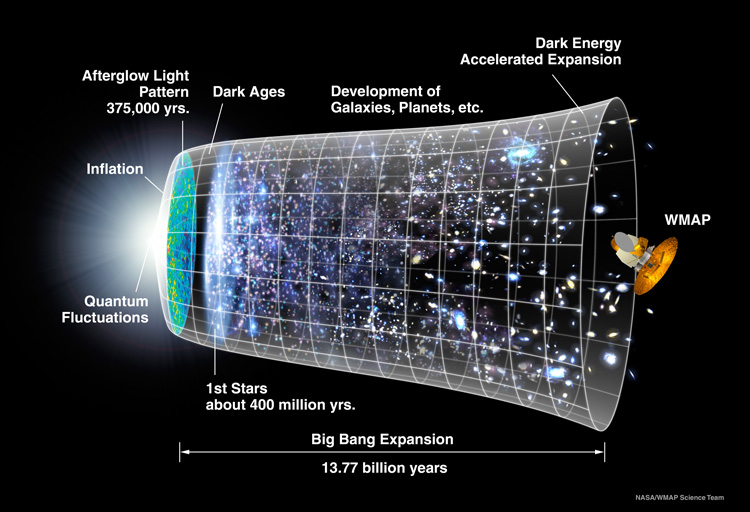Opening with SciAm blogger Michael Moyer, in a post titled Yes, Government Researchers Really Did Invent the Internet
“It’s an urban legend that the government launched the Internet,” writes Gordon Crovitz in an opinion piece in today’s Wall Street Journal. Most histories cite the Pentagon-backed ARPANet as the Internet’s immediate predecessor, but that view undersells the importance of research conducted at Xerox PARC labs in the 1970s, claims Crovitz. In fact, Crovitz implies that, if anything, government intervention gummed up the natural process of laissez faire innovation.
...
But Crovitz’s story is based on a profound misunderstanding of not only history, but technology. Most egregiously, Crovitz seems to confuse the Internet—at heart, a set of protocols designed to allow far-flung computer networks to communicate with one another—with Ethernet, a protocol for connecting nearby computers into a local network. (Robert Metcalfe, a researcher at Xerox PARC who co-invented the Ethernet protocol, today tweeted tongue-in-cheek “Is it possible I invented the whole damn Internet?”)
...
Other commenters, including Timothy B. Lee at Ars Technica and veteran technology reporter Steve Wildstrom, have noted that Crovitz’s misunderstandings run deep. He also manages to confuse the World Wide Web (incidentally, invented by Tim Berners Lee while working at CERN, a government-funded research laboratory) with hyperlinks, and an internet—a link between two computers—with THE Internet.
But perhaps the most damning rebuttal comes from Michael Hiltzik, the author [of] “Dealers of Lightning,” a history of Xerox PARC that Crovitz uses as his main source for material. “While I’m gratified in a sense that he cites my book,” writes Hiltzik, “it’s my duty to point out that he’s wrong. My book bolsters, not contradicts, the argument that the Internet had its roots in the ARPANet, a government project.”
Alex Pareene at Salon writes
So, basically, the government had its grubby innovation-suppressing paws all over the creation of the Internet, a fact reinforced by Michael Hiltzik’s response to Gordon Crovitz in the L.A. Times. (Hiltzik is the author of a book cited by Crovitz in his column.) Basically Crovitz got everything wrong:Crovitz then points out that TCP/IP, the fundamental communications protocol of the Internet, was invented by Vinton Cerf (though he fails to mention Cerf’s partner, Robert Kahn). He points out that Tim Berners-Lee “gets credit for hyperlinks.”And finally, Ethernet was “by no means a precursor of the Internet.” So: Government created the Internet, just like we thought before. Even the ornery libertarian-leaning geeks of Slashdot concede the point.
Lots of problems here. Cerf and Kahn did develop TCP/IP — on a government contract! And Berners-Lee doesn’t get credit for hyperlinks–that belongs to Doug Engelbart of Stanford Research Institute, who showed them off in a legendary 1968 demo you can see here. Berners-Lee invented the World Wide Web–and he did so at CERN, a European government consortium.
(One more fun fact: Al Gore genuinely did have a formative role in creating the Internet! The 1991 bill that funded, among lots of other important-for-the-development-of-the-Internet things, the creation of Mosaic, the mother of all web browsers, was known as "the Gore Bill." And Mosaic was created by a government-funded unit at the public University of Illinois at Urbana-Champaign. The government invented the Internet.)
People familiar with the history of the Internet will, obviously, barely notice this attempt at partisan revisionism. But I am very confident that “The Government Had Nothing To Do With Inventing The Internet That Is a Liberal Lie” will become one of those wonderful myths.... You’ll be seeing this one pop up — as common knowledge, probably — in Corner posts and Fox News hits for years to come. When some random idiot Republican candidate in 2014 or 2016 makes the rounds on the blogs for claiming that the private sector invented in the Internet, just remember that it all started right here, in the Wall Street Journal.
UPDATE: Oh, lord. Two minutes after publishing I see that Fox’s John Stossel is on board with the new narrative!
Steve Wildstrom sums it up:
The history of the internet is not particularly in dispute and we have the great good fortune that most of the pioneers who made it happen are still with us and able to share their stories. (For example, my video interviews with Cerf and Kahn.) In a nutshell, the internet began as a Defense Dept. research project designed to create a way to facilitate communication among research networks. It was almost entirely the work of government employees and contractors. It was split into military and civilian pieces, the latter run by the National Science Foundation. By the early 1990s, businesses were starting to see commercial possibilities and the private sector began building networks that connected with NSFnet. After initially resisting commercialization, NSF gave in and withdrew from the internet business in 1995, fully privatizing the network.
To paraphrase Yogi Berra, you can look it up in a book–or a web site.
- Posted using BlogPress from my iPhone

